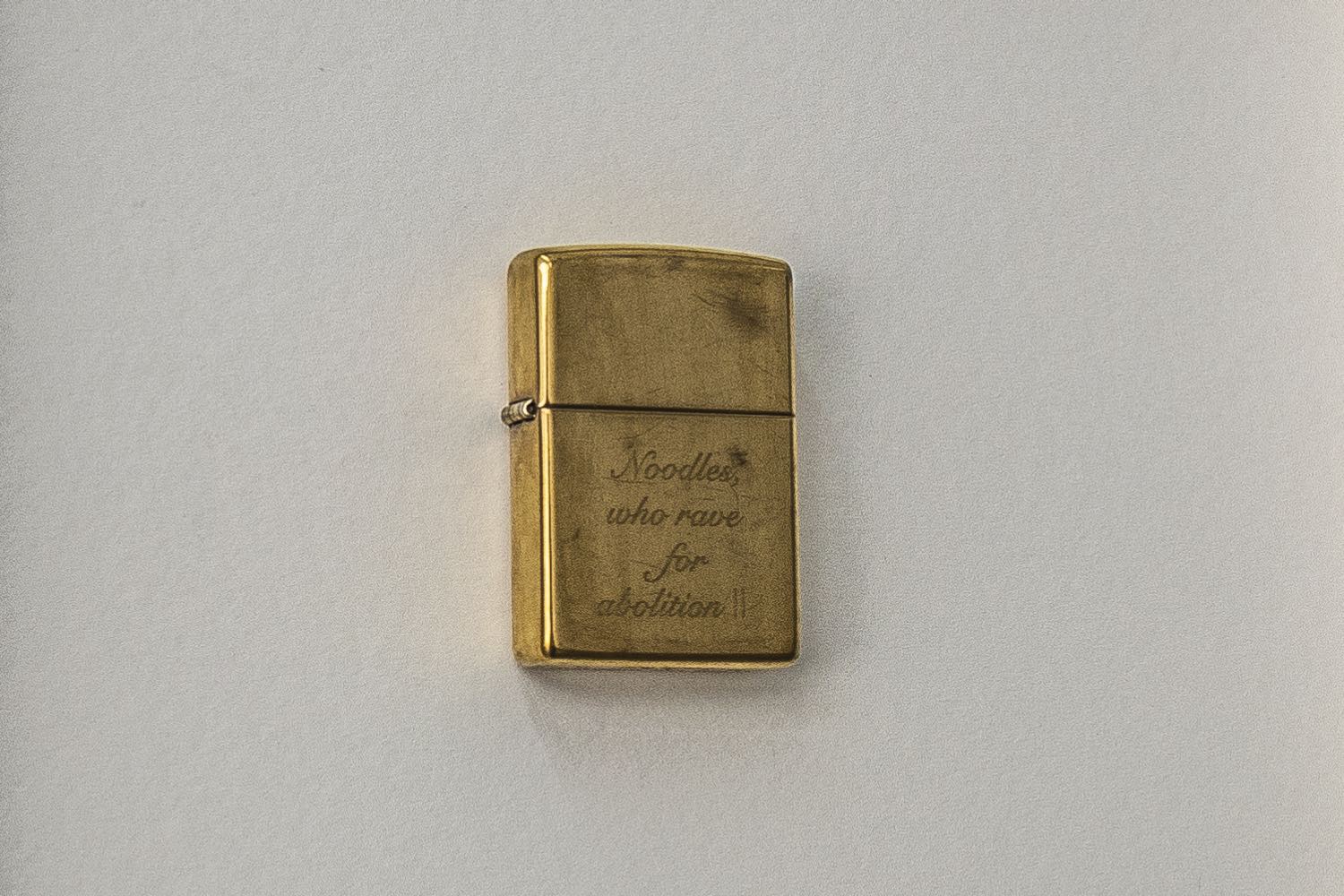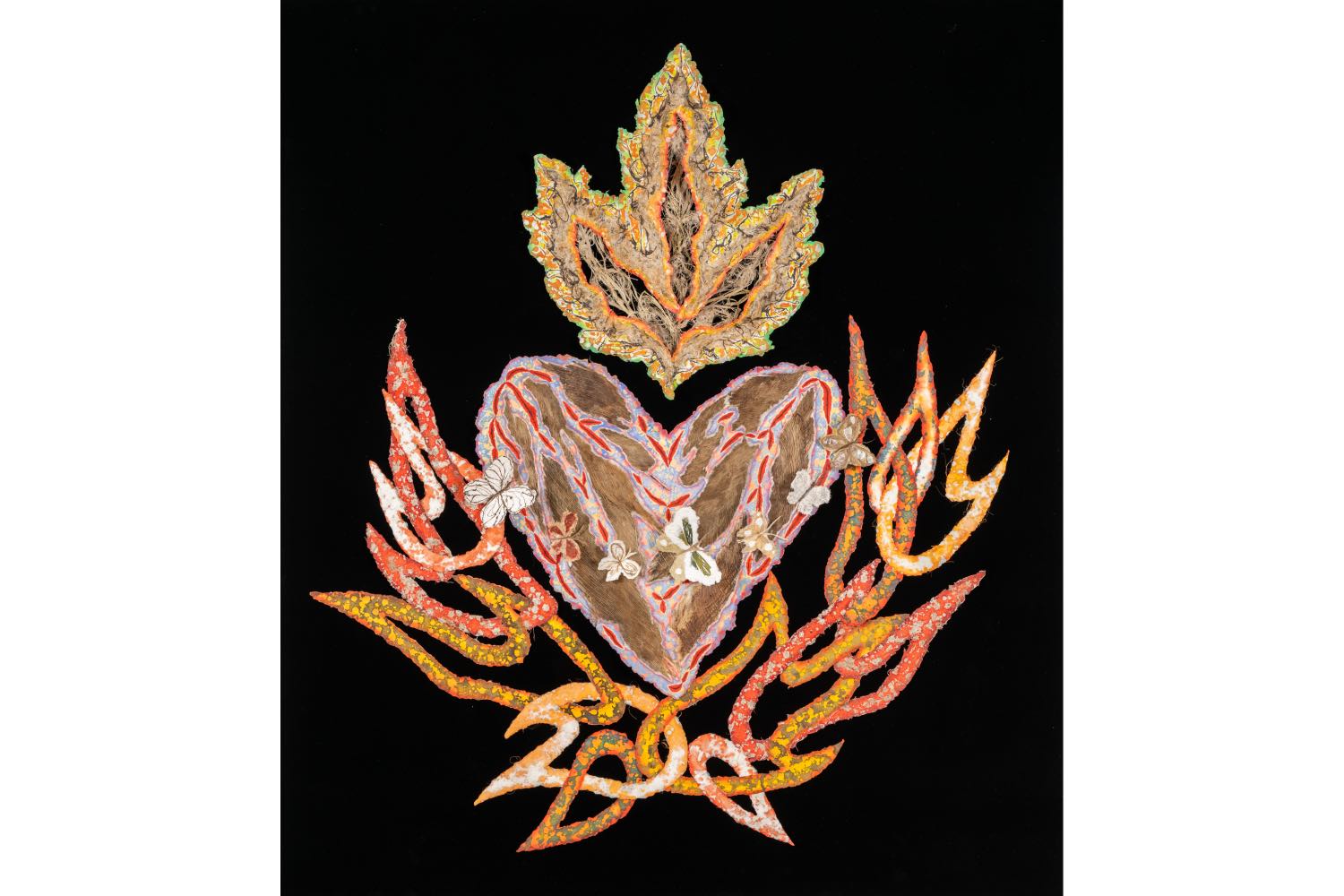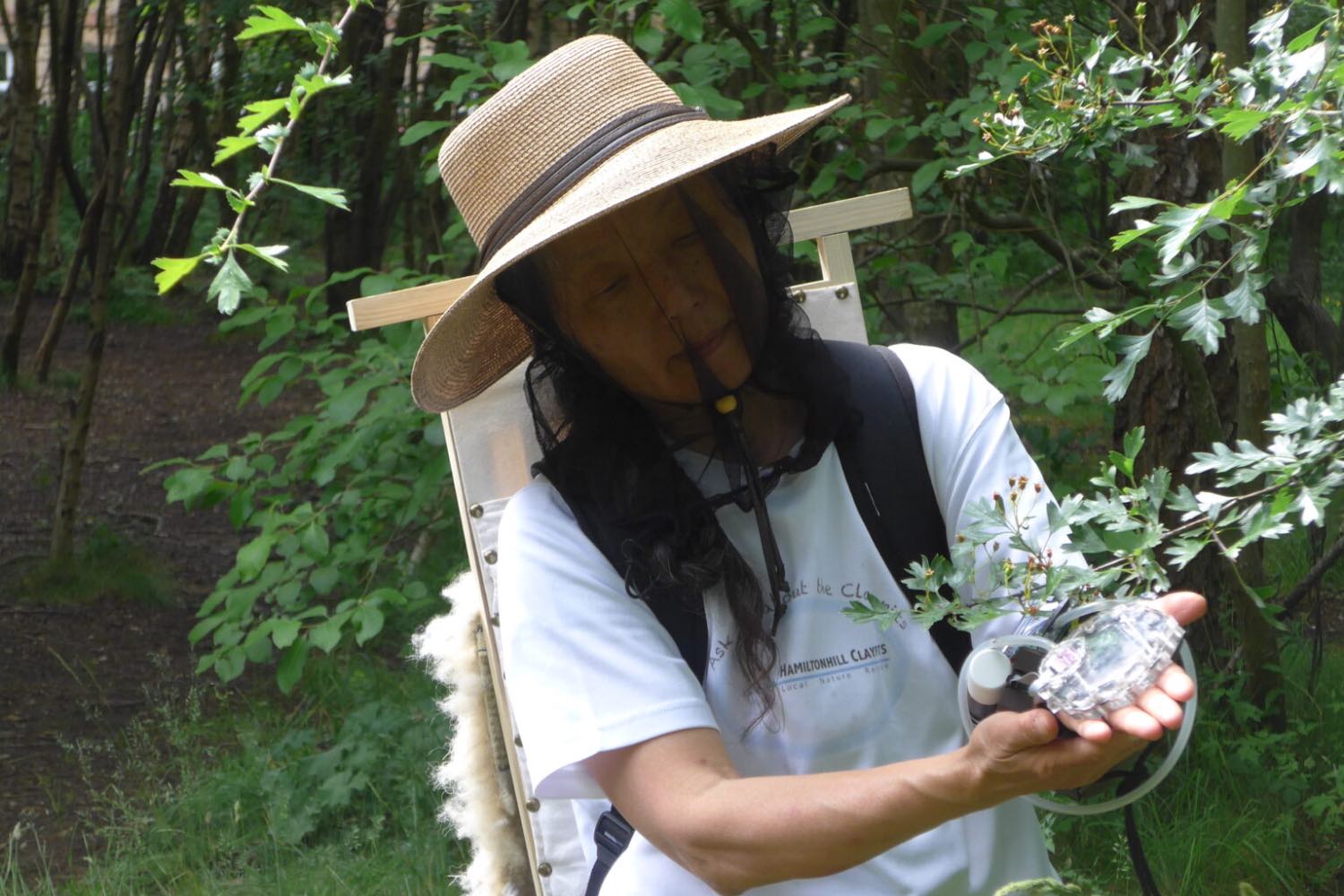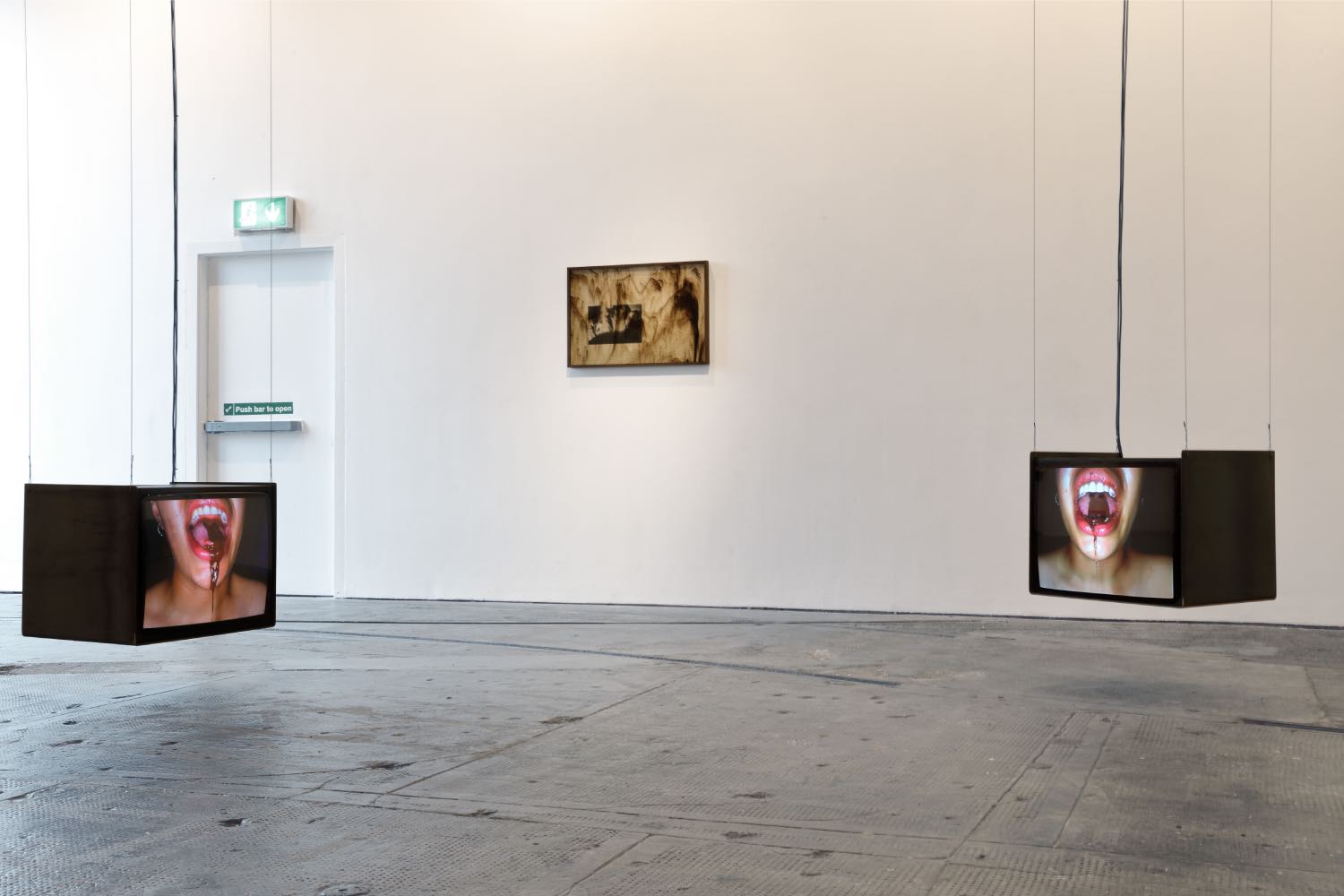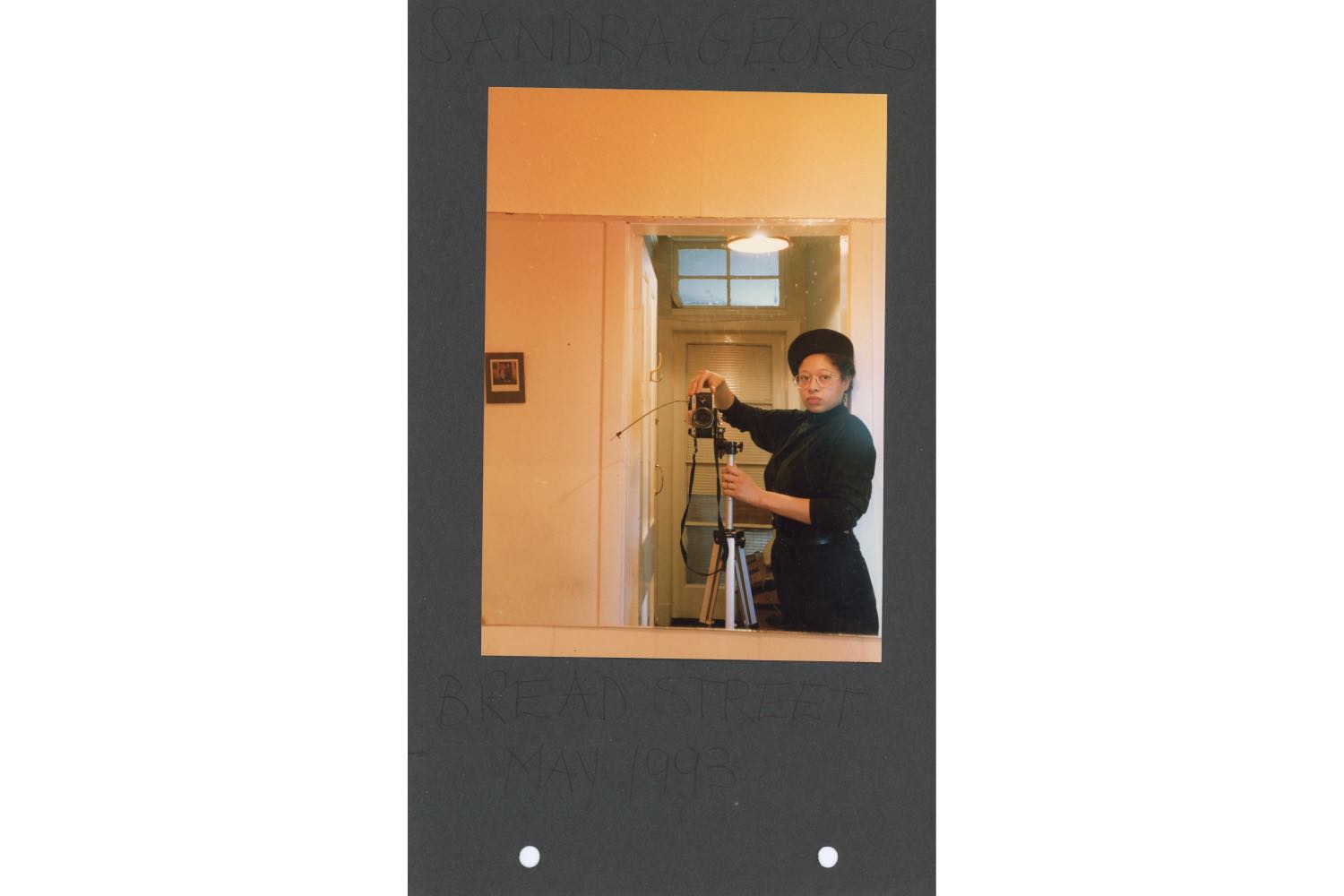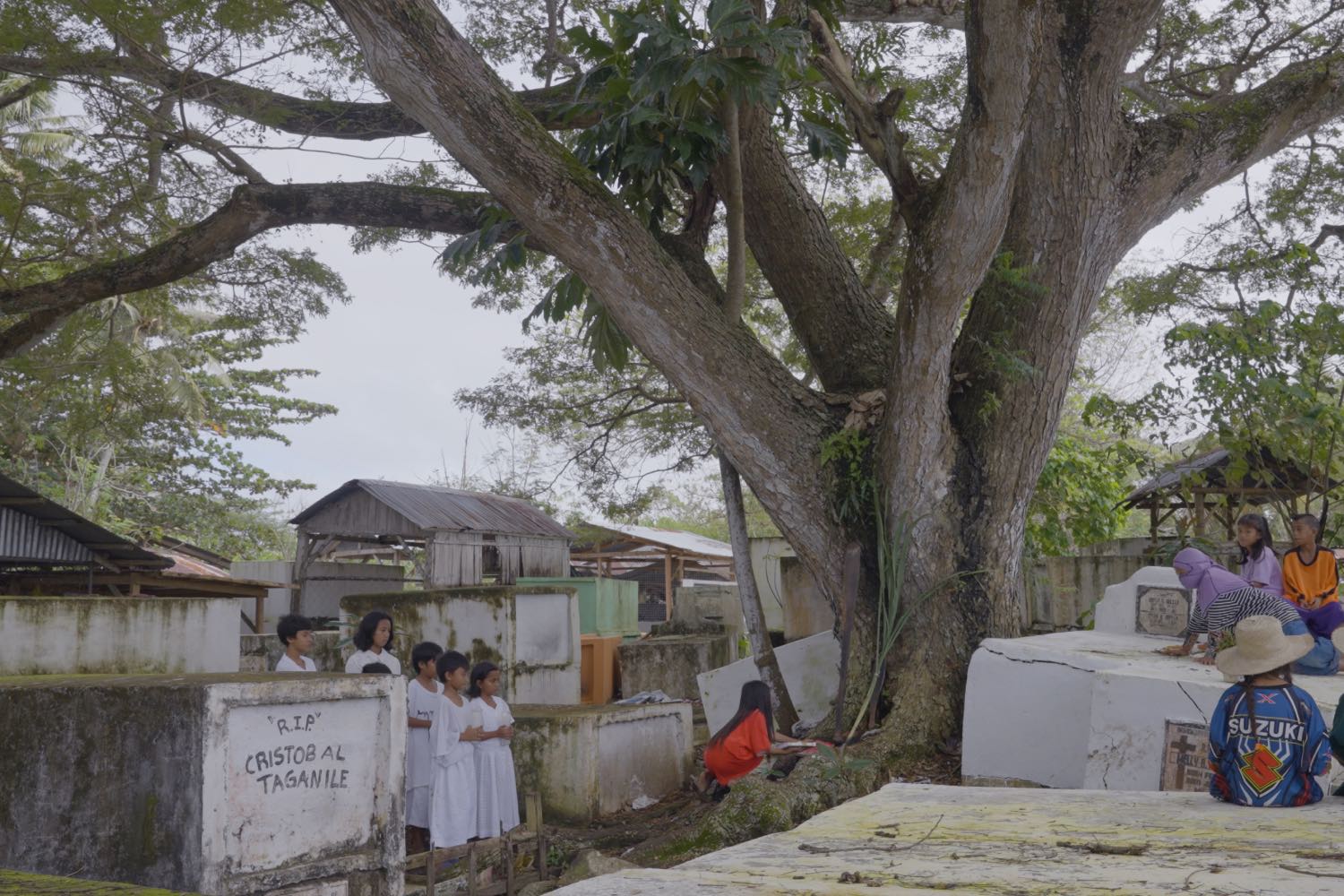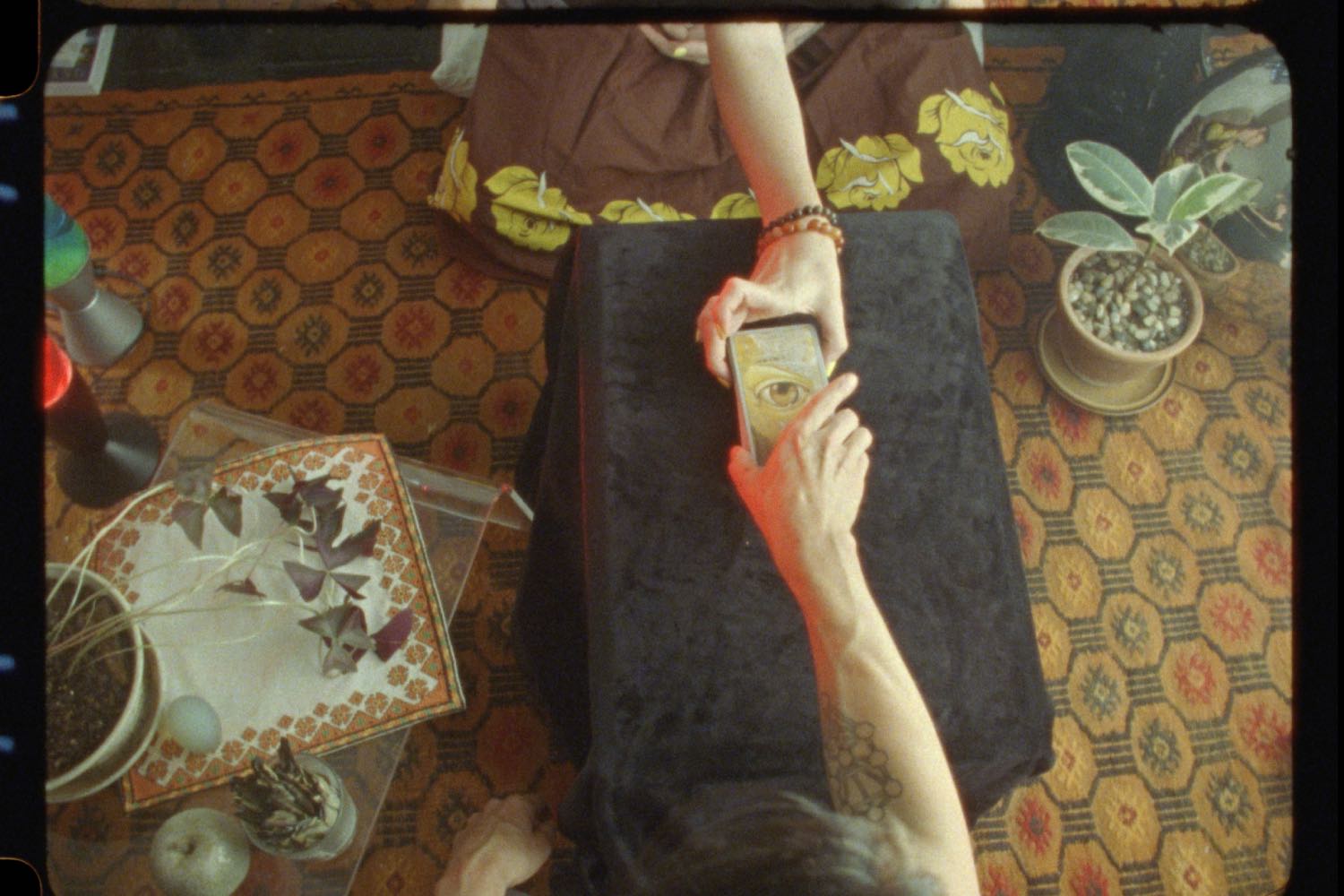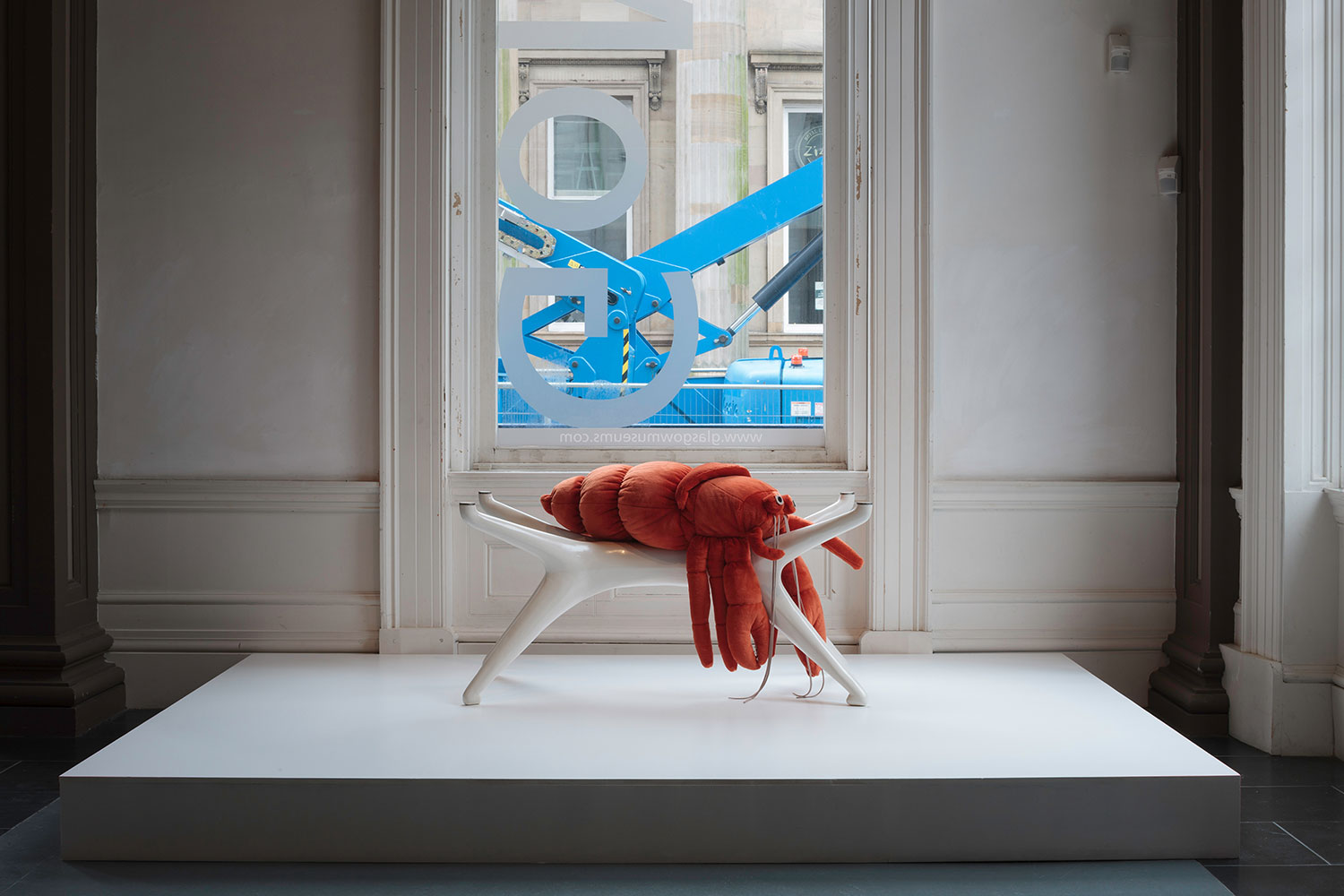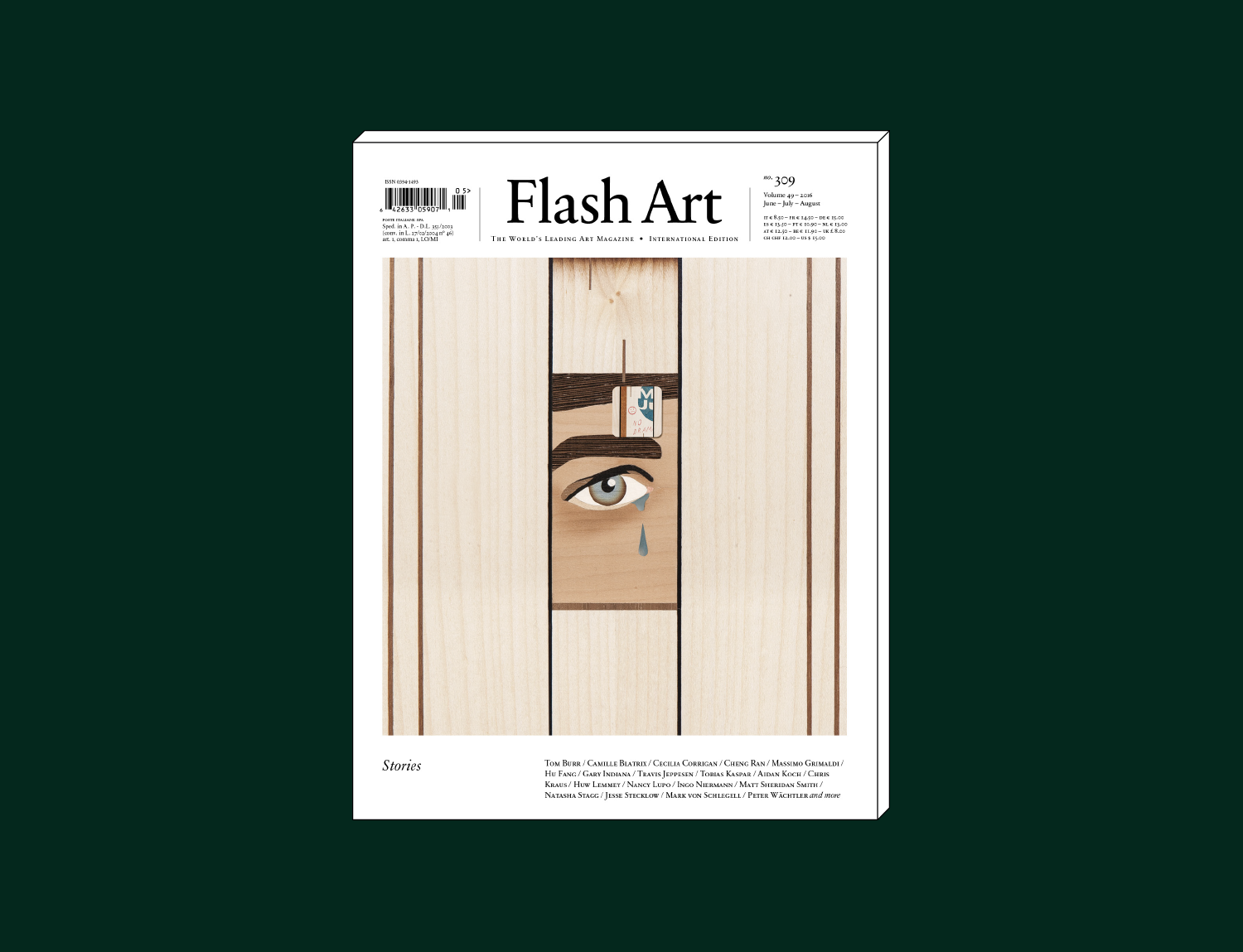How can one body hold so much art? By body I also mean city. I recently read somewhere that our collective body is what solidarity looks like, and this is, at its best, what art can do.
The structures that hold us in place, or down, imagine solidarity with another body – another city, another land – as the kind of radical empathy that impedes the steadfast idea of sovereignty, or at least a nation state. It is despite or because of this – more specifically, the stringent silencing of Glasgow International by its funders around the ensuing genocide in Gaza and the West Bank – that the work included in this year’s festival is grounded in ideas and gestures of care. From the community and thing-building of Camara Taylor’s exquisite “[Mouthfeel]” at Tramway – a collaboration between the artist, fellow artists and Glasgow’s feminist welding collective Slaghammers – to the human-plant relations of community gardening at Rumpus Room, Reiko Goto Collins’ Peace Arbour (2024) at Glasgow Women’s Library, Cindy Islam’s reframing of Muslim culture through the serenity of her audio-visual installation at Listen Gallery and community-worker Sandra George’s documentation of social margins and activism in Edinburgh in the seventies and eighties at 5 Florence Street. These gestures manifest through community-building, cultivation, practices of empathy, reciprocity and hospitality, not as token measures but as an attempt to live as we practice — and vice versa.
Unlike other biennial formats, Glasgow’s festival of contemporary art is not confined to a theme or a location, but it is bound by place — not as a concrete or romantic notion but as a political and social site of difference and of change. Once the “second city of the Empire,” Glasgow, in its sandstone grandeur and historic tobacco trade, cannot avoid its colonial past and today forms the largest asylum dispersal area outside London, while also being bound in a long socialist history and a formidable refugee council.
From those cultural institutions like Tramway and CCA that are deemed legitimate bodies in the city, to those institutions or bodies – in the loosest sense of the word – that are constructed for a time in someone’s front room, a cemetery, the twelfth century cathedral, a former printing college, many of this year’s artists are rallying against a lack of institutional and infrastructural care, more specifically Glasgow Life – the charitable wing of the City council that “delivers” culture and sport and “manages” (i.e funds) the festival – but also the hard line of Creative Scotland funding cuts and the deterioration of public infrastructure.
In a small watercolor painting by a fourteen year old Tai Shani, made around 1990, and titled I am Swallowed by the World, the artist embodies not a monstrous consumption – or greed – but the envelopment of her child self in the folds of art: the flat perspective of surrealism, as per Dali and Magritte, meeting the fantasy in Leonora Carrington’s exquisite narratives. Part of a group show with Sam Keogh and Josie Perry titled “Legendary Psychasthenia,” and hosted in Keogh’s studio, Shani and the other artists blur the distinction between species – or subject – and their environment. Rather than simply offensive or defensive mimicry of the environment by its subject, psychasthenia is translated here into animate but not human entities, and into hyper-saturated and indecipherable images of empathy that bleed off the page, cultivating a feeling between entities. The “empathic moment” underscores Reiko Goto Collins’ Peace Arbor — a tree nursey that the artist cultivated over the last six months in a vacant parking lot opposite Glasgow Women’s Library. The Peace Arbor became a stage for a performance in which Goto Collins summoned hakoto or the sound of a leaf through an “instrument sculpture” of the same name that gathers the moisture, and frequency of the trees to create instrumental scores. Here, as in the ongoing collaboration between Goto Collins and her partner Tim Collins, and there, as in Camara Taylor’s collaborative constructions at Tramway, I begin to think a lot about how we make space for others within our practice, as our own gesture of care and hospitality. In Mina Heydari-Waite’s Farang (2024) at Offline, the artist constructs a semi-fictional narrative tracing her British-Iranian heritage through Hi-8 footage filmed by her father James when visiting her mother’s family in Iran, turning family members into collaborators who are made audible from behind the camera. Heydari-Waite’s mother Hamideh becomes the itinerant narrator, the pitch and cadence of her voice carrying us through the artist’s reconstruction of family and found footage, the footage itself becoming a throughline towards and away from the past.
The difficulty of one body – or one city – holding so much art is our desire and failure to make sense of it all, because the bodies that make up a body — or a city — are multifarious and ever-changing, which makes a system or thematics for making or curating basically impossible. This year’s artists seize upon that idea as an opportunity; I am thinking of Taylor’s rust and rum and steel pipes, welded with care, clashing poetically with Cindy Islam’s pink sateen and plastic fruit. Which is to say that the work in Glasgow International is at its best when it comes to touch not explicitly, but in fortuitous and unexpected ways; in the group show “Where a Castle Meets the Sky” at the Pipe Factory, Suds McKenna’s neon coloured airbrushed drawings extend from one framed composition – depicting the beautiful intimacy of the city’s former queer bar Bonjour – to the gallery wall, as bodies that dance around Emelia Kerr Beale’s textile patterns of desire. In the center of the old factory floor, Jonny Walker’s sculptural works summon a cross-generational moth infestation through metallic tape and small resin moths installed under window frames and on structural pillars. Household moths seek spaces of domesticity and comfort, a soft surface to land on and feed on, but unlike human consumption, which is perceived within capitalist society as a mark of success, the moth’s consumption is a blight, a pestilence.
Once classified as a suborder of Heterocera, or a subspecies of butterflies, moths now share the lepidoptera category with butterflies while comprising a collective body of their own — nearly 16,000 varieties, none of which are easy to associate or categorize. Just like humans, moths seek warmth and light — for growth, for nourishment. They also seek all kinds of climates, terrains; some of them migrate from elsewhere. This collective body seems like an appropriate metaphor for the social fabric of a city like Glasgow that finds solidarity in numbers, but also in difference. Despite cold weather fronts and the stringent aesthetics of the M8 motorway and brown river Clyde running through its middle, Glasgow is a city that defies easy categorization but also redefines what care looks, or feels like, when we do it ourselves. At Rumpus Room, in Govan Hill, a carpark has been turned into a community garden in which local residents help to grow food like Mooli and tomatoes based on their culinary needs or desires; but it is also about a practice ‘where individuals come together to cultivate and nurture a shared piece of land’ and explores the history of communal gardening, tracing it back to early Egypt and Mesopotamia, while artists work with local young people and residents to document and articulate the experience as field recordings, murals, collage. For the practice-based research project titled All Walls Will Fall, Jamie Bolland, Hussein Mitha and Nadia Rossi – also of Rumpus Room • draw on youth-led resistance movements and solidarity with Palestine through discursive formats and questions, which appears on Glasgow International’s online journal, allowing both the organizing institution and the artists to speak: “From Glasgow to Gaza, Globalise the intifada!” they decree. The falling of walls raises another prevalent question in the south side of the city: how as the cultural workers and creatives that facilitate these art spaces, they might inhabit rather than occupy an area that is grappling with both infrastructural neglect and gentrification, owing to its affordable private housing market.
In Minne Kersten’s installation Where I’m calling from (2024) at David Dale Gallery, moths infest the hand-printed wallpaper of an attic bedroom originally conceived as a film set in Paris, into which Kersten invited a real flock of moths. Where I’m calling from comprises a real bed and real furniture and the detritus of a life, but everything is a little upturned – filmic, dreamlike – so that it moves between performance, reality and imagination and returns us to that tension between invading and inhabiting space.
On the top floor of a tenement block, overlooking train tracks, Celine gallery presents “The Stone Bouquet from Cologne Black Socks, No Panties!” by Sarah Cameron, which includes two photographs — self-portraits in which we trace the silhouette of Cameron’s naked body in long grasses at night – one of which is placed carefully at the center of a varnished dining table and in the middle of the room – which is in fact just a room of someone’s house — the work itself becoming something of a ritualistic act that re-appropriates domestic space. Two paintings accompany the photographs, one made using a canvas originally painted by the artist’s father, returning us to the structures of care that Cameron looks to if not upturn then at least complicate. There is also perhaps a point to be made about the delicacy, or carnality, of a woman’s body on the dining table and Cameron’s self-portraits land with wry knowing, like an exquisite form of deadpan humor. Beyond hospitality for hospitality’s sake, Cameron and other exhibiting artists seek hospitality for joy’s stake — something that in the face of genocide, famine and, closer to home, the damaging actions of a tory government, feels in short supply.
At GOMA, the collaborative practice between Enzo Camacho & Ami Lien, explores the colonial violence, and pervasive oppression on the Philippino island of Negros — not least during and after the Escalante Massacre that was carried out by the government in 1985, when a group of plantation workers revolted over land rights. The central film titled Langit Lupa (2023), is comprised of oral histories, testimonials, new footage of the island and the community affected by the massacre and occupies the central ground floor gallery space, which incidentally, was the townhouse of William Cunninghame of Lainshaw, a wealthy Glasgow Tobacco Lord who made his fortune through the triangular slave trade. Amidst the film work and the beautifully crafted wall reliefs using traditional Negros paper-making techniques and fabricated from things like beeswax, catalpa tree leaves, sugar cane fibre and, is a series of rotating lights, filtered through the intricate and veined pattern of onion skins and projected onto rice paper screens, recalling the disco ball that the farm workers would illuminate after the lights were turned out, attempting to carve out joy amidst political struggle. In “Dusty,” at City Gallery — one of the many satellite exhibitions that benefit from the festival as an organizing body, without officially “taking part”—Renata Lucia Ottati imagines the regalia of an Ecuadorian baby shower. Preguntas(2024) an arch of balloons in candy blues and reds and yellows and purples, is installed in the tenement space above a table festooned with streamers and handmade party boxes, opposite Jennifer Aldred’s ineffable triptych rubbing out, in which she imagines a landscape of playful crowds and figures kicking back in stilettos.
This year is the tenth Glasgow International – the first since 2021 – and arrives amidst growing concerns over public infrastructure and funding in Glasgow, and Scotland more broadly. This year’s iteration proves that it is not so much the governing or institutional body that practices care – or joy – but the collective body, and this is reflected in the artists and curators and project spaces that gather for a moment under GI’s umbrella. Like the moth who blurs the distinction between species, between inside and out, habitation and invasion, Glasgow is defined by its complex social fabric, but the festival is here to remind us that within it, art exists everywhere all the time.

